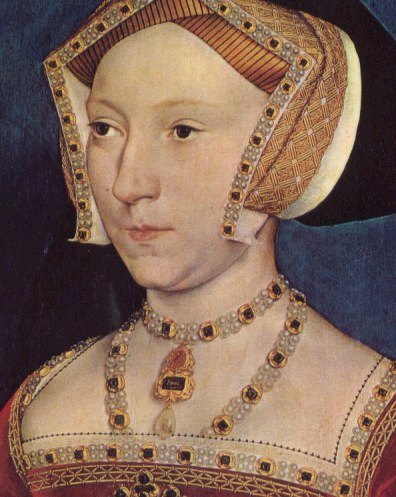

It’s tempting to ponder on how differently things might have panned out had Jane Seymour not been on the marriage market in 1536.
A young, loved up Jane Seymour was once engaged to Sir William Dormer until William’s parents decided she wasn’t good enough for him and ended the engagement. Bet Jane had a good old laugh about that when she became Queen of England.
William went on to marry firstly Mary Sidney by whom he had two surviving daughters and two sons that died in infancy. His second wife was Dorothy Catesby and they had six daughters and two sons.
When William’s fifth daughter Catherine married John, Baron St John of Bletsoe she found herself on the periphery of the tussle for the Tudor throne, but it was her sister Jane who was firmly centre stage.
Little is known of Catherine’s childhood. She probably grew up in the family home at Eythrope in Buckinghamshire while Jane was raised by her maternal grandparents. The two sisters possibly had little to do with each other, but kinship was everything in the 16th century.
A fervent Roman Catholic, sixteen year old Jane served as lady in waiting to Mary, Henry’s daughter by his first wife Katherine of Aragon. Although some twenty years younger than the Queen, Jane was one of her closest friends and confidantes. It was Jane who nursed the Queen through her last illness and was entrusted with passing on various jewels to Elizabeth.
Following the Queen’s death in 1558 Jane married Spanish nobleman Don Gomez Suarez de Figueroe, adviser to Mary’s husband Philip, and left England for Spain.
Jane must have been quite a character – Machiavellian or motivational – who knows? She managed to remain on good terms with the English court while helping exiled English Catholics and lending her support to the accession of Mary Queen of Scots. Meanwhile half sister Catherine sat firmly in the other camp.
Catherine’s husband Baron St John of Bletsoe was appointed the keeper of Tutbury Castle, Staffordshire during the incarceration there of the Scottish Queen. But that’s not the end of this sister’s familial problems. While Jane and her husband sought to aid the imprisoned Queen, Catherine’s husband along with the Earls of Derby, Warwick and Worcester, were among the peers on Elizabeth’s commission at the trial of Mary at Fotheringhay Castle in 1586. Mary Queen of Scots was executed at Fotheringhay on February 8, 1587. The new King James, Elizabeth’s successor and Mary’s son, invited Jane to return to England to be one of his wife’s ladies in waiting, but she declined the offer.
Jane died in Spain in 1612. Her much younger sister Catherine outlived her by just two years.
Catherine’s alabaster memorial in St Michael’s Chapel, Westminster Abbey included the figures of her two children Oliver and Anne kneeling beside her reclining figure. The broken monument was removed in 1723 but was restored to its original place during the 19th century.
A translation of the Latin inscription reads:
“Sacred to the memory of Catherine Lady St John, daughter of William Dormer of Eithrope, Knight. The widow of John, Baron St John of Bletso, to whome she born Oliver, a little son who died at a tender age, and Anne the wife of William Lord Howard of Effingham, the eldest son of Charles Earl of Nottingham, ruler of the seas of England. Since death is certain, and the care of those who come after uncertain, remembering death and in certain hope of resurrection in Christ, she placed a monument here to herself while alive. She died 23rd march in the year of grace 1614.”
Catherine is one of at least three St John gentlewomen buried in Westminster Abbey.
For more images of the Dormer memorial visit http://www.flickr.com/photos/32157648@N08/4594468395/sizes/l/in/photostream/